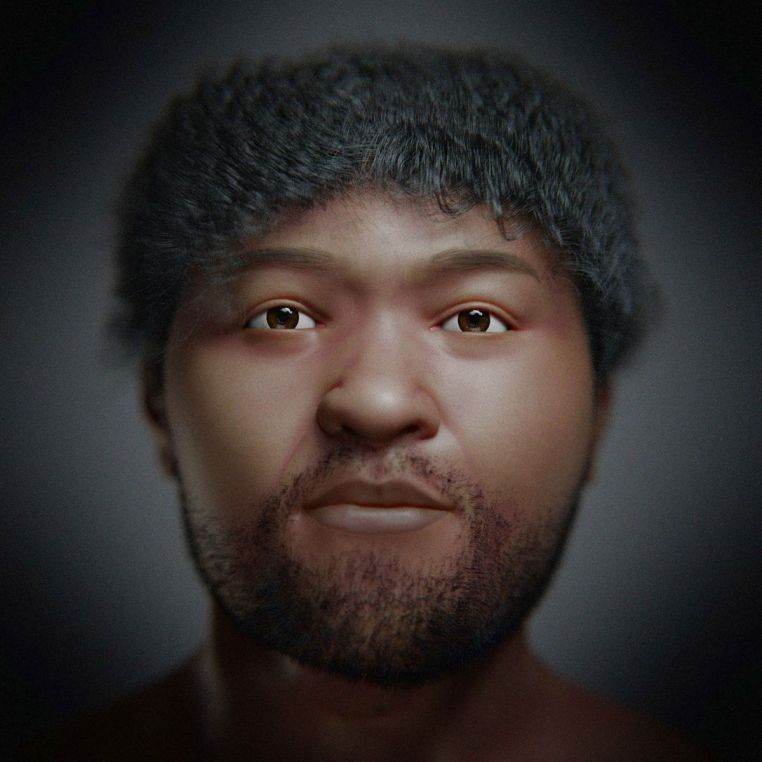
Reconstruction of the Nazlet Khater specimen, a Paleolithic skeleton of c. 30000 BP excavated in Egypt. Biometric analysis indicates that Nazlet Khater is morphologically distinct from ancient and modern North African specimens (including the Iberomaurusians of Taforalt), and is instead most similar to Sub-Saharan Late Middle Stone Age specimens. According to Vermeersch (2002), this suggests that Nazlet Khater represents a “Proto-Khoisan” stock that once inhabited areas as far north as the Nile Valley. This artistic reconstruction, with its resemblance to the modern Khoisan, supports that theory. However, it is incorrect in two important respects. Firstly, the Proto-Khoisan would have had a darker complexion. We know this because the derived rs1426654 allele at the SLC24A5 gene, which is the primary light skin-conferring allele that contemporary Khoisan individuals bear, was transmitted to their ancestors by ancient Cushitic pastoralists (Lin et al. (2018)). Older Khoisan specimens (c. 4000 BP) dating from before that contact period did not carry that mutation (Schlebusch et al. (2017), Supplementary Materials). Secondly, scientists have observed that the distinctive “narrow eye opening” and “peppercorn” hair of Khoisan individuals appear to be controlled by the rs111298318 allele of the KRT74 gene. Fan et al. (2023) report that this rs111298318-C mutation is carried by most Khoisan samples they analysed (73%), whereas it is rare among other populations of Africa and Eurasia (5%). Thus, the reconstruction, although generally accurate in terms of facial structure, should actually show a darker-skinned Nazlet Khater specimen with “peppercorn” hair.